Nepal is the top trekking destination in the world – FACT.
With the vast Himalayan range running the length of the country, there’s nowhere on earth that slaps you in the face with a massive dose of the majestic outdoors like this mountain nation.
For over 60 years the distinct outline of Mount Everest has fuelled the appetite of many an adventurer and mountaineer and more recently, sparked a trekking industry that’s revered the world over.
For those keen to follow in the footsteps of the Sagamartha’s first summiteers, Hilary and Tenzing, the trek to Everest Base Camp (EBC) is worthy substitute…that is if you don’t fancy spending six weeks acclimatising and parting with $50,000 to reach the top of the highest mountain in the world.
The trek along the Dud Khosi River to the Khumbu valley passes through lush, rhododendron-lined gorges that open into wide glacial valleys and rise to high altitude snow-capped passes that offer sweeping panoramic vistas, in a matter of days.
In 2015 Sophee and I climbed to Annapurna Base Camp (4068m) in the west of Nepal and loved every minute. In 2016 I returned to the country to work filming a television series at EBC so was lucky enough to experience the ten-day trek that winds its way towards the roof of the world.
THE TREK – A DAY BY DAY GUIDE
ARRIVAL DAY
Tighten your seatbelt, kick your hand luggage under the chair in front of you and brace ready to land at the most exciting airport in the world.
At 2860m the elevation at Lukla won’t affect you, but watching the approach to the runway through the front window of the plane definitely will. The runway is perched precariously on a hillside and lurches up from the valley floor at an angle of 12°, which is just about enough of an incline to slow the plane down before it ploughs into the wall at the end of the runway!
DAY 1
Have fun in Lukla, it’s a great introduction to Nepali village life. With no cars around, the only traffic jams are the convoys of horses and cows that are used as the local delivery service. Spend a day exploring the town, wander through the market square and head down the main street keeping an eye out for the brilliant fake global superbrands– Starbucks, Illy and YakDonalds!
Grab your walking boots, find your Sherpa guide and porter and get ready to set off on the adventure of a lifetime, but just remember “bistari bistari” or slowly, slowly. There’s absolutely no race here, in fact, the faster you go the more likely you are to submit to the dreaded AMS – or Acute Mountain Sickness.
The first day on the trail takes you downhill to the glacial grey river churning far below, through farming villages, across suspension bridges, past teahouses, prayer wheels and Mani stones, before climbing back up to the village of Phakding. for your overnight stop.
DAY 2
The daily routine when you’re trekking through the Himalayas is get up early and hit the trail. During the trekking seasons (April-June and October-November) the weather in the morning is generally better with clear skies and cool temperatures. As the heat of the day builds so does the cloud base bringing light rain at lower elevations and snow showers once you’re above 3500m.
The slog up to Namche Bazaar is one of the most gruelling but spectacular days on the EBC trek. Initially, the trail winds through the undulating valley floor alongside the Dud Khosi River, before taking a sharp turn right to an incredible view of the magnificent Namche double suspension bridges festooned with prayer flags, spanning a wide gorge.
Once you’ve conquered the next 15 minutes of uphill and arrive at the vertigo-inducing bridges, the toughest part of the entire trek is about to start – an 800m switchback ascent through pine forests past yaks, porters, mule trains and jubilant trekkers…all heading downhill after successful EBC ascent.
Top Tip – always stay on the inside of the path or risk getting shoved off into the valley floor below. Yaks and mules have no regard for human life!
DAY 3
Namche Bazaar sits at 3440m, and is the perfect place for a day’s acclimatisation. After climbing 600m since day one in Lukla, a deserved rest is in order and the town is sweet reward with bakeries, coffee shops, pubs and trekking supply stores squeezed into every corner.
If you’re feeling energetic (on what’s supposed to your day off) a walk to the Everest View Hotel (the highest hotel in the world at 3880m) is well worthwhile. On a clear day the unmistakeable vista of Everest juts into the upper atmosphere with the jetstream blasting the summit, sending trails of spindrift into the dark blue sky.
DAY 4
It’s back on the trail again after a worthy rest and the elevation continues to rise, albeit more gradually than before. If you’re visiting in the spring season, the magnificent, vivid pink Rhododendron forest that lines the track takes your mind off the continually thinning air, if only for a few minutes.
At this altitude, the onset of AMS could well be starting to wing its nasty way into your brain and body. Headaches, extreme tiredness, vomiting and nausea and all early indicators that the depleted oxygen levels are slowly taking their toll.
Top Tip – hydration is one of the most important ways to keep the dreaded AMS at bay. Drink at least 2-3 litres of clean, filtered/boiled water every day…and yes, you’ll pee like an incontinent grandma!
The 600m climb to the majestic monastery at Tengboche is another memorable day of battling your brain and body. It’s a lesson in placing one foot in front of the other and attempting to conserve energy, but don’t fret, you can replenish everything you’ve lost at the Tengboche bakery – the apple crumble and espressos are simply epic!
Once you feel adequately refuelled, the 30-minute walk downhill to Debuche through the last forest on the trek is well worth it. Rivendell Lodge is as beautiful as it sounds with comfy rooms, a large and a warm social area, plus the view up the valley towards Everest is mind-blowing.
DAY 5
The dominating feature for the trek between Debuche and Pheriche is the towering massif of Ama Dablam at 6812m. It outshines every other peak in the region, surging from the valley floor although the power of the colliding tectonic plates have concentrated their efforts to a single point, spearing a billion tonnes of rock high into the cold Himalayan air. It is, without doubt, the sexiest peak in the area by far.
It’s an open, wind-swept climb across a landscape akin to the Scottish Highlands that fills the second half of the day. As the elevation increases the flora and fauna slowly disappears until the juniper scrub is gone and you’re wandering through a landscape that looks more akin to the top of the world. The dry and dusty valley floor is a testament to the lack of humidity found at this altitude. Bleak and barren it may be, but look up from your trudging feet and the sheer majesty of the Himalayas makes you feel alive once again.
DAY 6 (+ DAY 7 – ACCLIMATISATION DAY)
With nearly 1000m of elevation gained since Namche Bazaar, it’s time for another well-earned acclimatisation day in the salubrious surroundings of Pheriche (or as I prefer to call it Ferel-che). Nestled on the floodplain of the Tsola River there isn’t much to do apart from sit back and watch the local yaks grazing whilst drinking tea, chat with the locals and other trekkers, watch clouds swirl overhead or listen to the wind whistle through the valley.
Top Tip – From here on up it can start to get cold. Really cold. At night temperatures can plummet to -20c and if the wind gets up, even lower. Make sure you’ve got some warm down clothing to see you through the worst of it. On the flipside when the sun comes out you can get sunburnt very easily. There’s very little ozone to protect you from the harmful UV rays when you’re 4000m above sea level!
DAY 8
Make sure you’ve warmed up your ankles and knees before you set out from Pheriche at the start of the day. The first 3km are a test of balance and dexterity that requires jumping over frozen puddles and hopping from rock to rock to clear the undulating, rough terrain before the start of another sharp rise – the Tugla Pass.
The final terrain change of the trek happens here as alpine grasses give way to glacial moraine. From here on up, the lunar landscape of the Khumbu Glacier dominates your experience, providing a sensory overload of sights and sounds befitting the top of the world.
Take it slow, drink lots of water and maintain your own pace. It’s easy to get carried away trying to keep pace with the porters or Sherpas. DON’T DO IT! These guys and girls have lived at altitude all of their lives and are used to the thin air. You aren’t. As a rule of thumb walk fast enough to stay warm, but not so fast that you start to sweat or it’ll chill you to the core once you stop and rest.
Your overnight destination is Lobuche (4940m), which used to be famed for its terrible accommodation, frigid, dormitory-style concrete sleeping blocks and limited food options. Luckily things have changed dramatically in the last few months with the swanky new (by Himalayan standards anyway) Oxygen Altitude Hotel complete with warm, insulated rooms, a great social area…and even Chicken Kiev on the menu – well worth going for!
DAY 9
As you leave Lobuche behind and enter the final straight along the Khumbu Glacier, a detour up Kala Patthar (5643m) is definitely worth it.
The peak provides trekkers with the most accessible point to view Mount Everest from base camp to peak as, due to the structure of Everest, the peak cannot be seen from base camp itself.
Stay at Gorak Shep, the last bastion before the final haul into base camp, get an early night’s sleep before departing around 3am for the dawn climb to the summit to get an incredibly, epic view of sunrise over the Sagarmatha/Everest/the top of the world.
TOP TIP – take warm clothes including gloves, your camera (with a full battery as the cold zaps the life out of them), and a bottle of water. It’s a tough slog but well worth it once you arrive at the prayer-flag festooned summit.
DAY 10
There’s only 3km to go now until you arrive at Trekker’s Point, the entrance to base camp proper, but it’ll take a while to get there. The terrain is undulating to say the least and with the Everest amphitheatre of Nuptse, Pumori and Lobuche peaks bearing down on the glacial moraine from all around, frequent avalanches, rockfalls and cracks and groans from the Khumbu glacier are a constant reminder you’re now up with the gods.
Once you arrive at Trekker’s Point it’s worth stopping for a while to take it all in. After all, you’ve spent the last few days exerting a ridiculous amount of effort to get here. Pause and take the obligatory photos, stare in wonder at the surrounding peaks and wonder ‘how on earth do people actually live here for ten weeks every year – if you read this blog post you can find out.
THINGS YOU NEED TO KNOW
Best time of year: April – June before the monsoon kicks in, or October – November when the air is less dusty
Time required: 7-10 days up, 3 days down
Distance: 53km
Ascent: 3500m
Guide or no guide: Definitely employ the services of a guide and a porter. It’s a superb way to learn about the local area, the places you’re visiting and it helps fund the local economy. Plus you can look up and take in the view rather than watch your feet as you haul your heavy pack uphill!
Permits: Two are required. A TIMS (Trekkers Information Management System) card is required. If you use the services of a local guide and porter they cost $10. If you decide to go alone then $20.
Entrance to the Sagarmatha National Park also needs to be paid – $30 + 13% government tax. Pay either in Kathmandu in advance or at the park gate in Monjo.
Essential gear for the trek: shorts, wicking t-shirts, rain jacket, buff, a peaked hat, a good pair of worn-in walking boots/shoes, sunscreen, water bottle, steri-pen or water purification tablets, snacks and food treats for along the way (remember everything gets more expensive the higher you go)
Essential gear for the cold: Down, down and DOWN! You can pick up everything and anything you need to stay warm at the shops in Namche. Lukla and Kathmandu are expensive in comparison! A down jacket is pretty essential for the evenings, grab a decent pair of socks and gloves too or your extremities can get cold pretty quickly. Wear base layers of merino wool to help stay warm.
Take local currency for snacks, drinks and meals. Don’t assume your foreign $ will be accepted and if it is, the exchange rate will be pretty bad anyway.
Food expectations – almost every menu from Lukla to Gorek Shep all look pretty similar they just get more expensive the further up you go! Expect homemade pizzas, chow mein, pastas, momos and the very traditional, very Nepali Dal Bhat!
If you’ve considered Nepal as a trekking destination for a while but have been put off by the earthquakes of 2015, please think again. Nepal is a country that relies on tourism, with the industry providing 487,000 jobs around the country. Since the earthquake tourist numbers have been down by 60% which has had a massive effect on the lives and communities of this developing country. Now’s the time to enjoy this wonderful Himalayan nation. Buy your boots and book your flights.
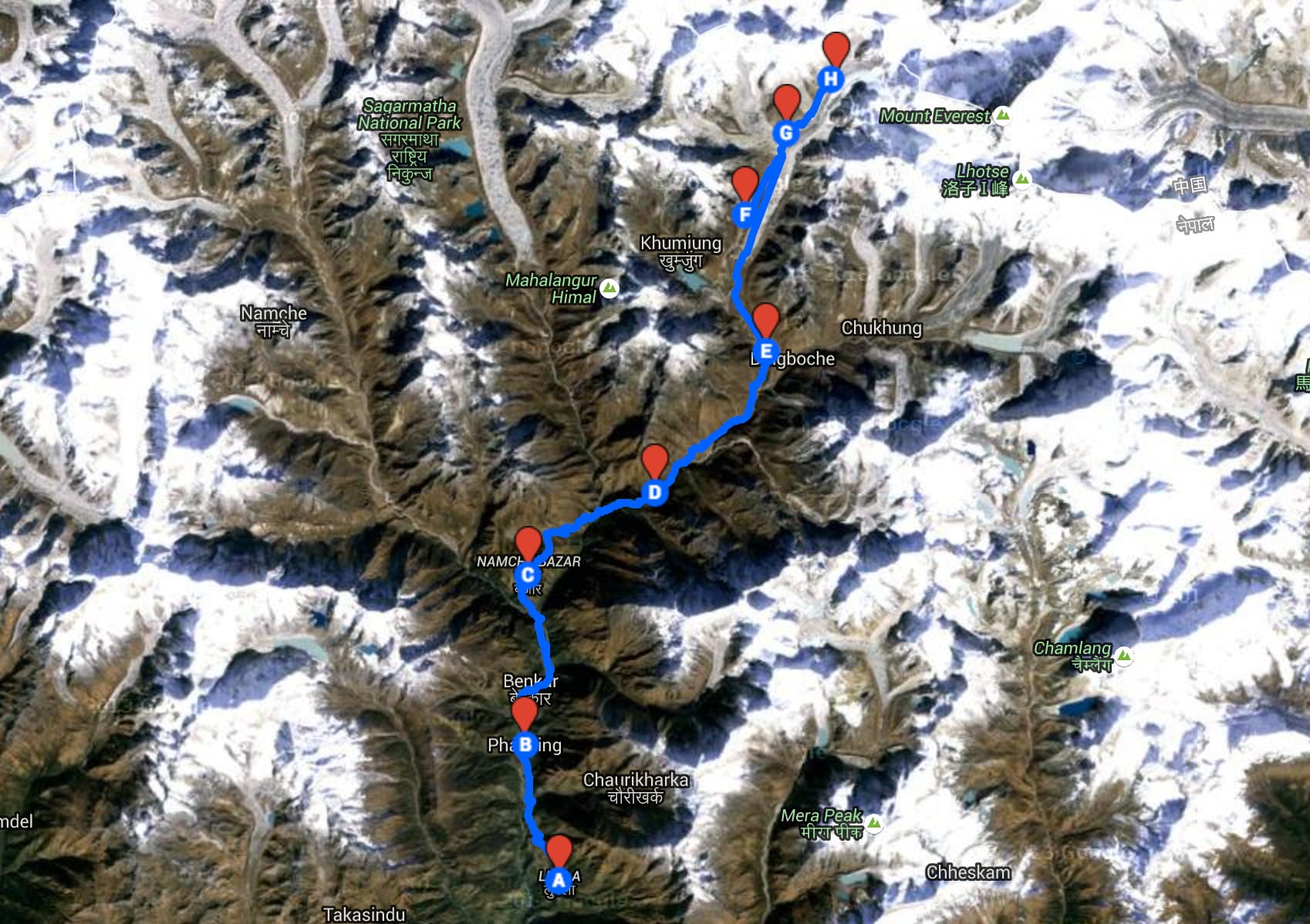

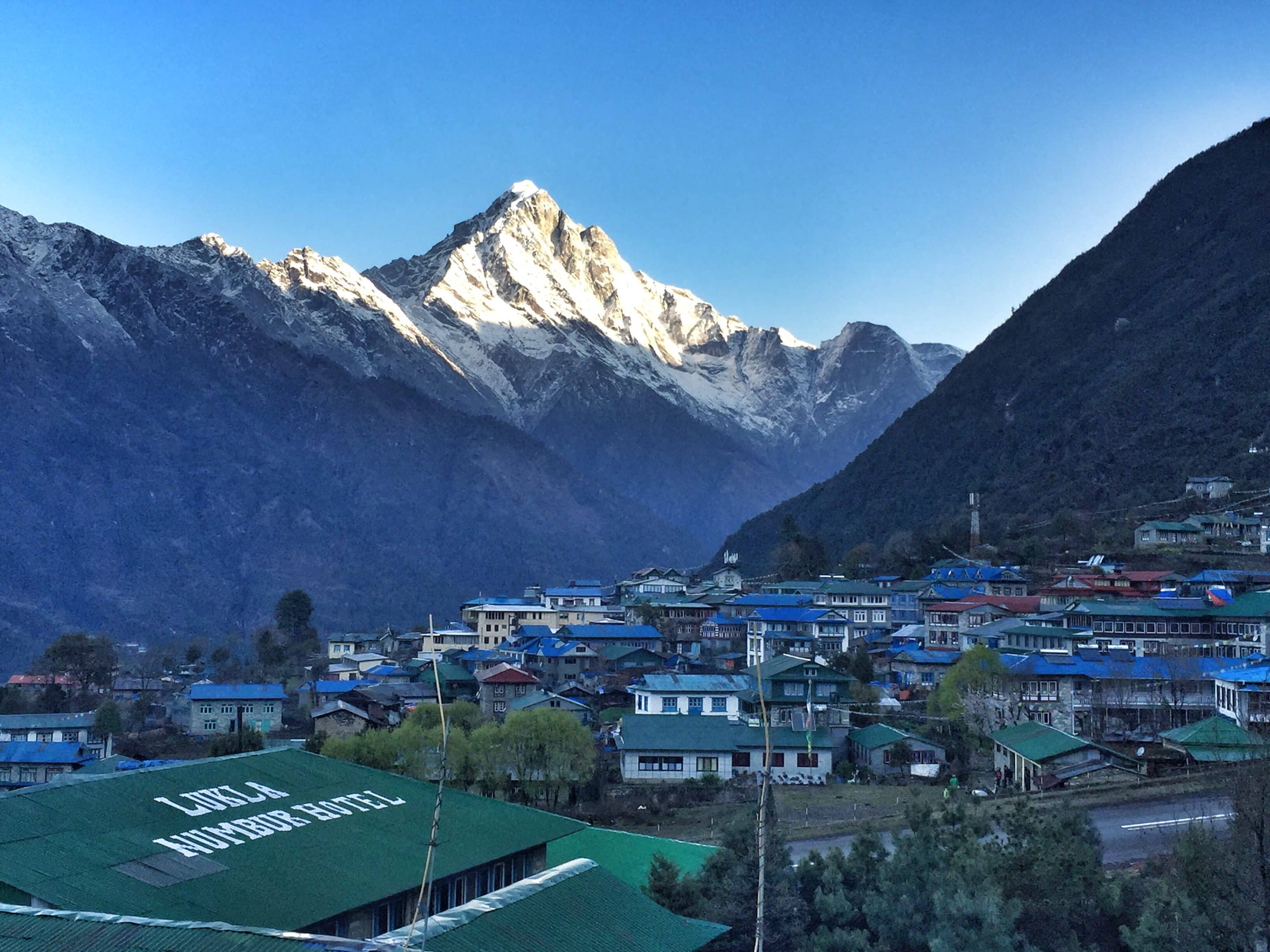
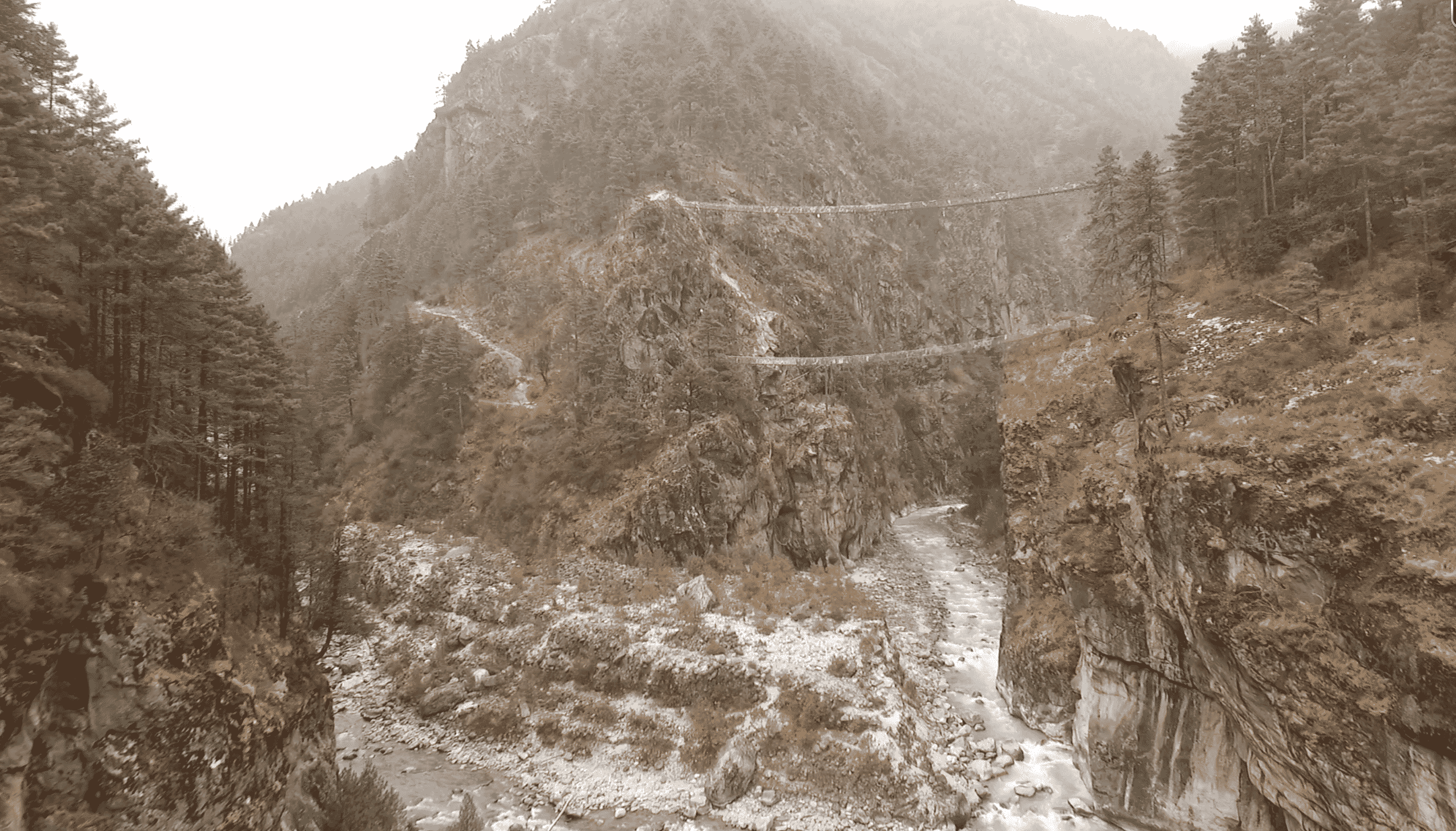
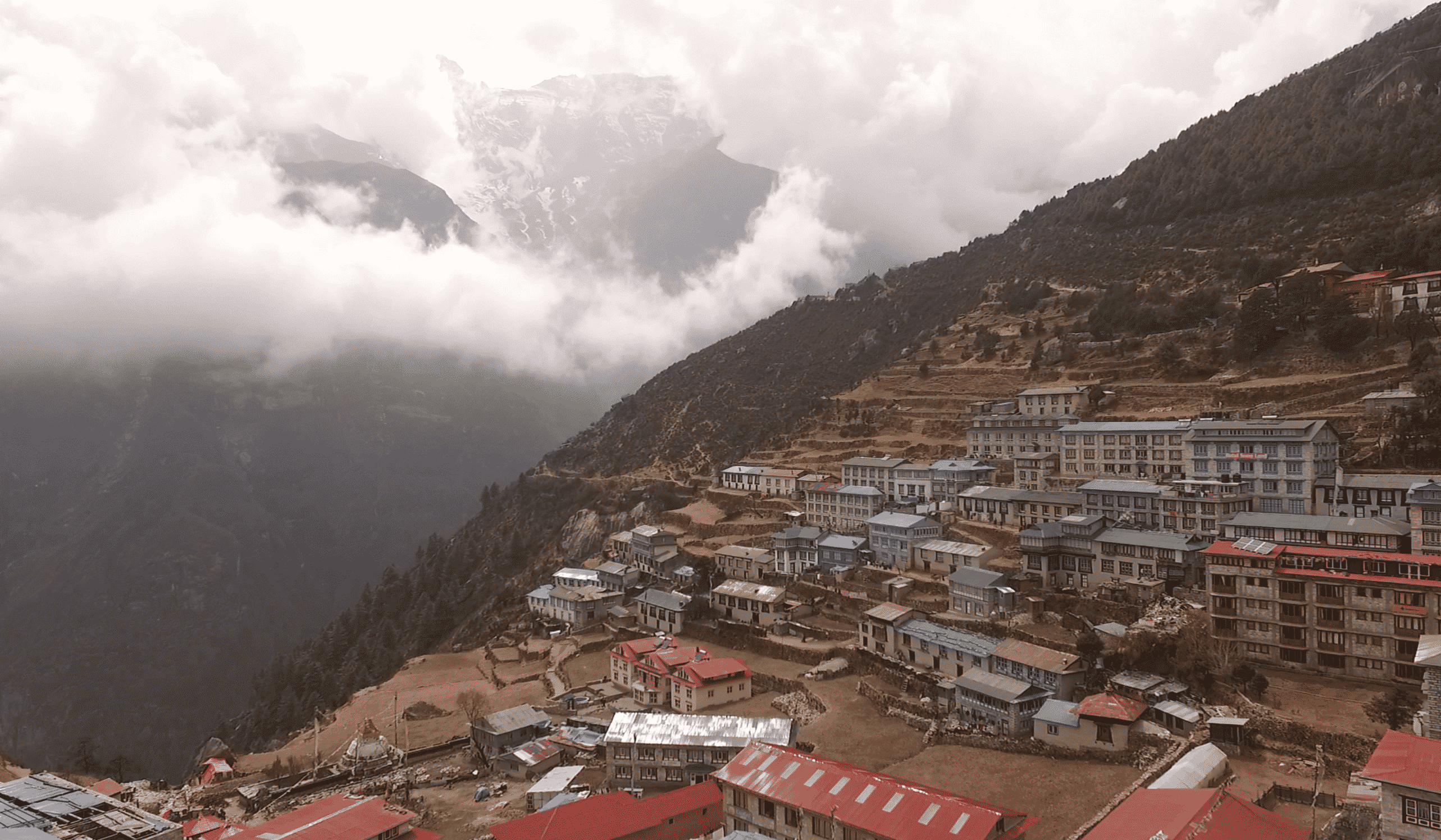

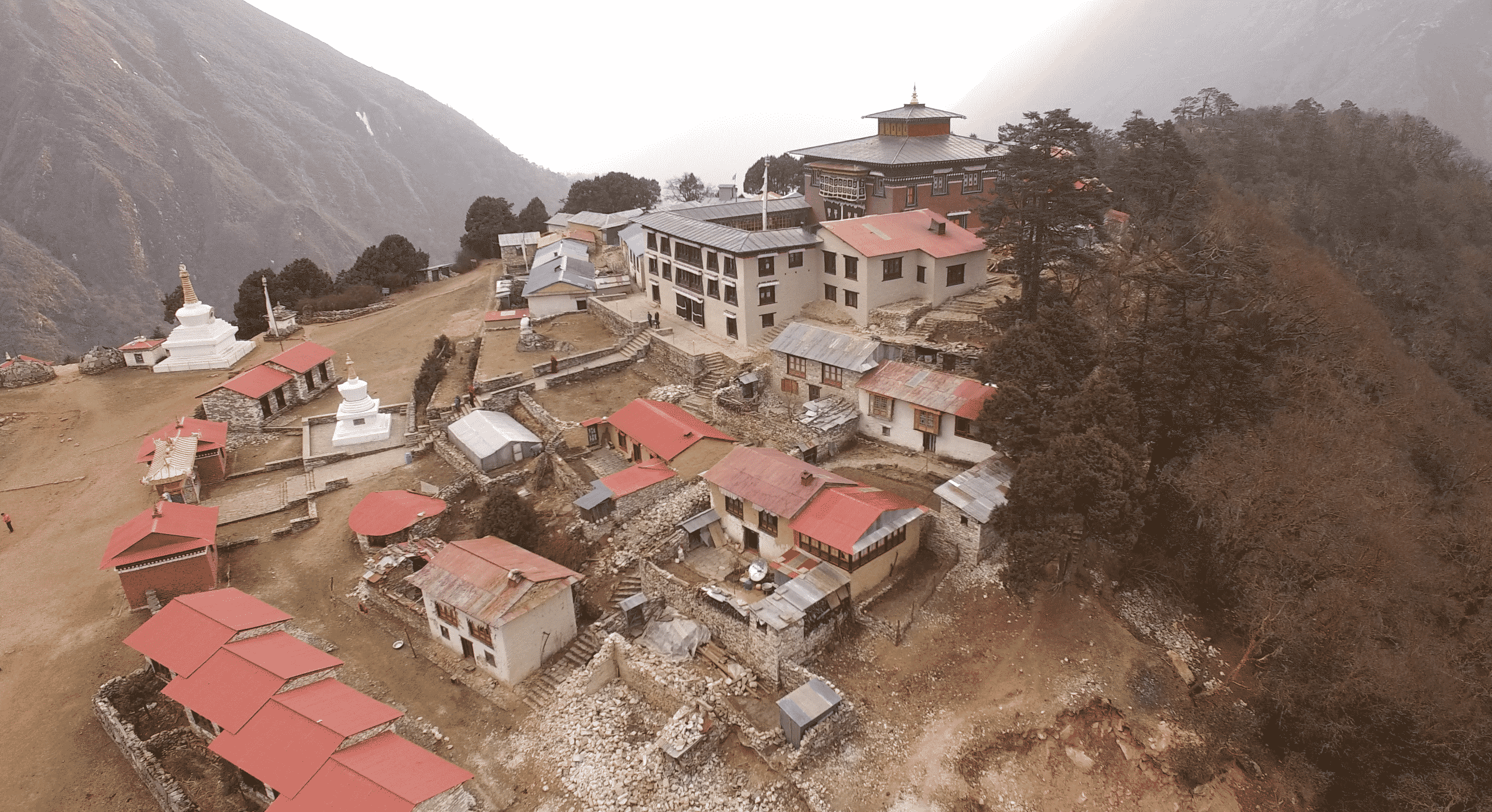

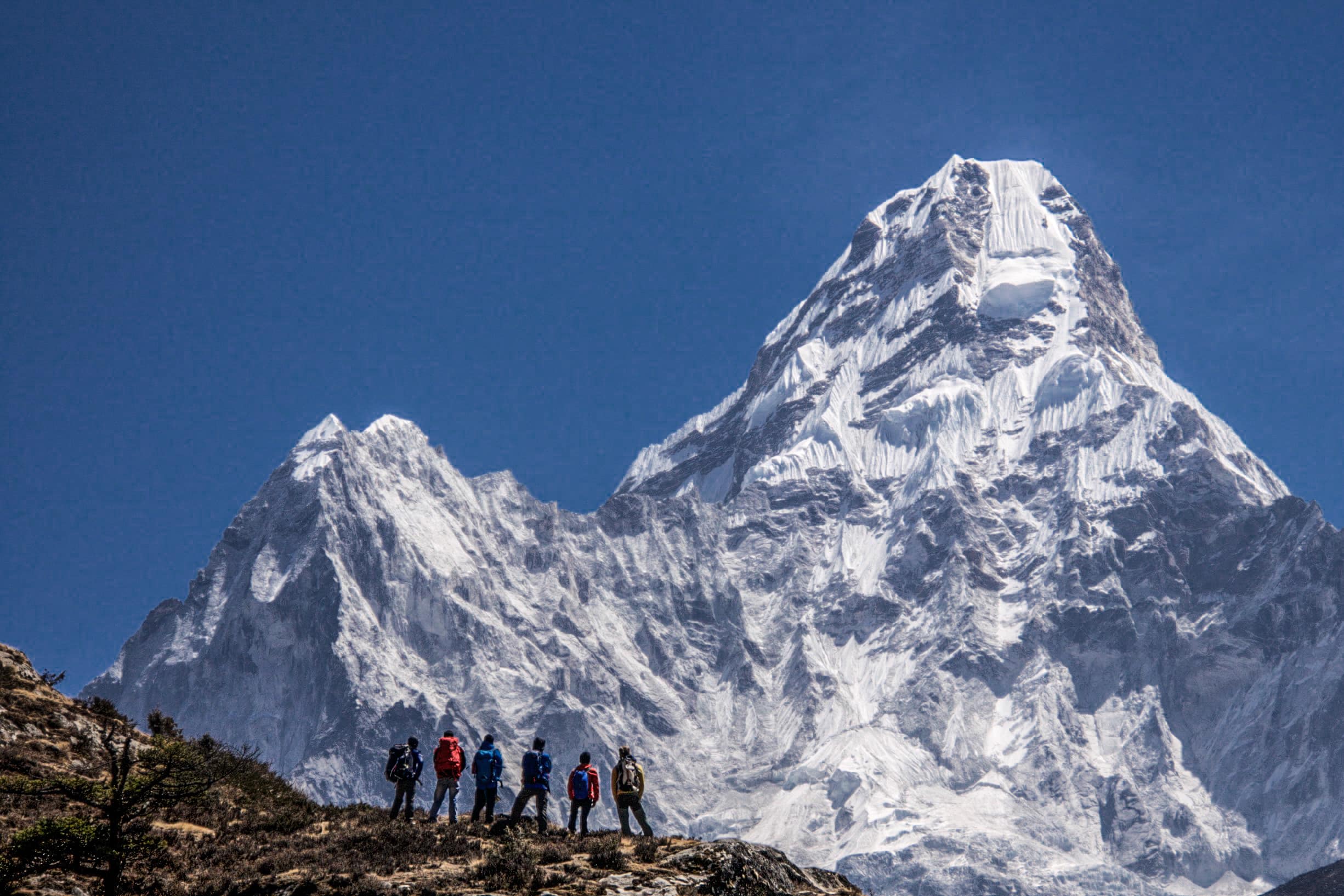
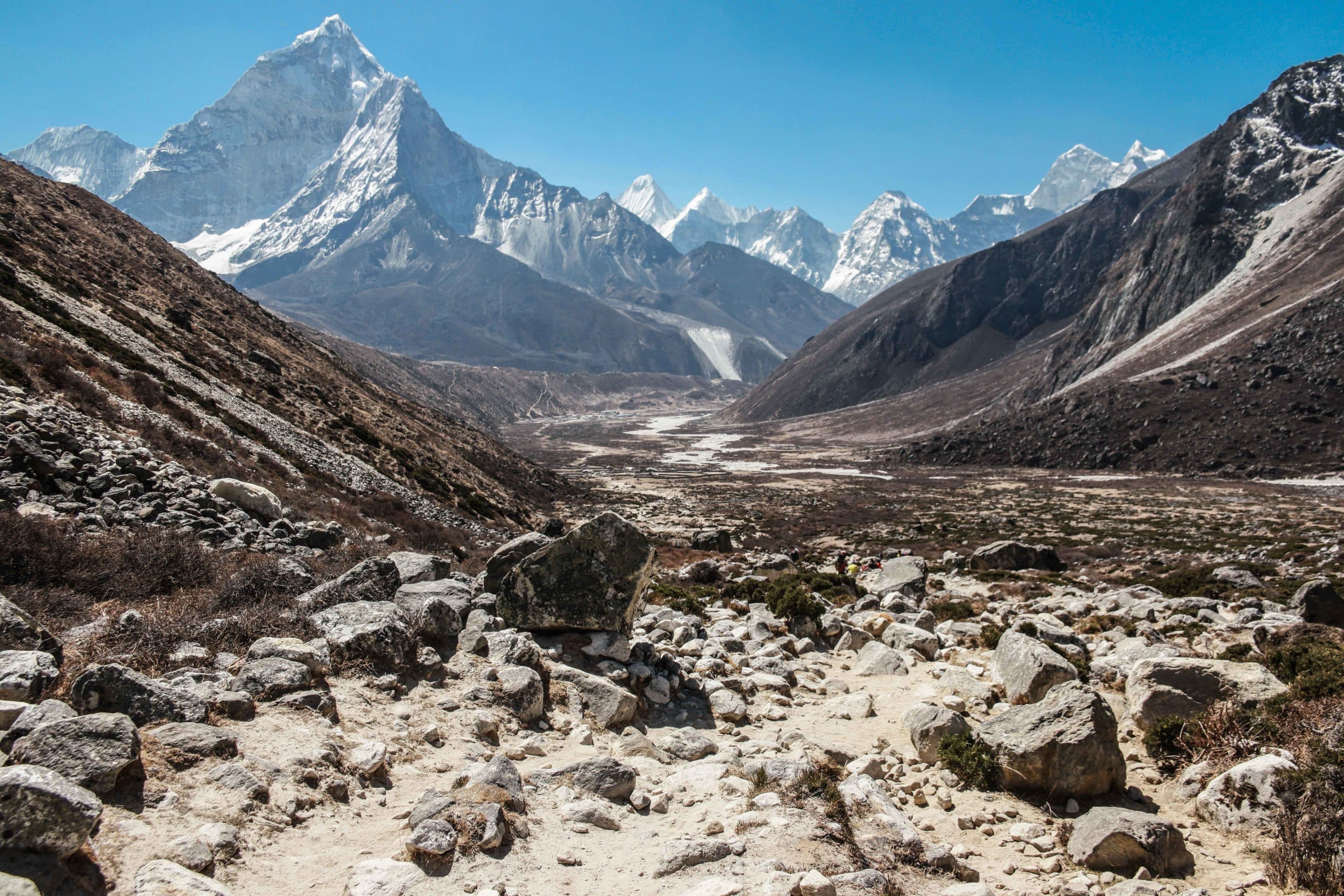
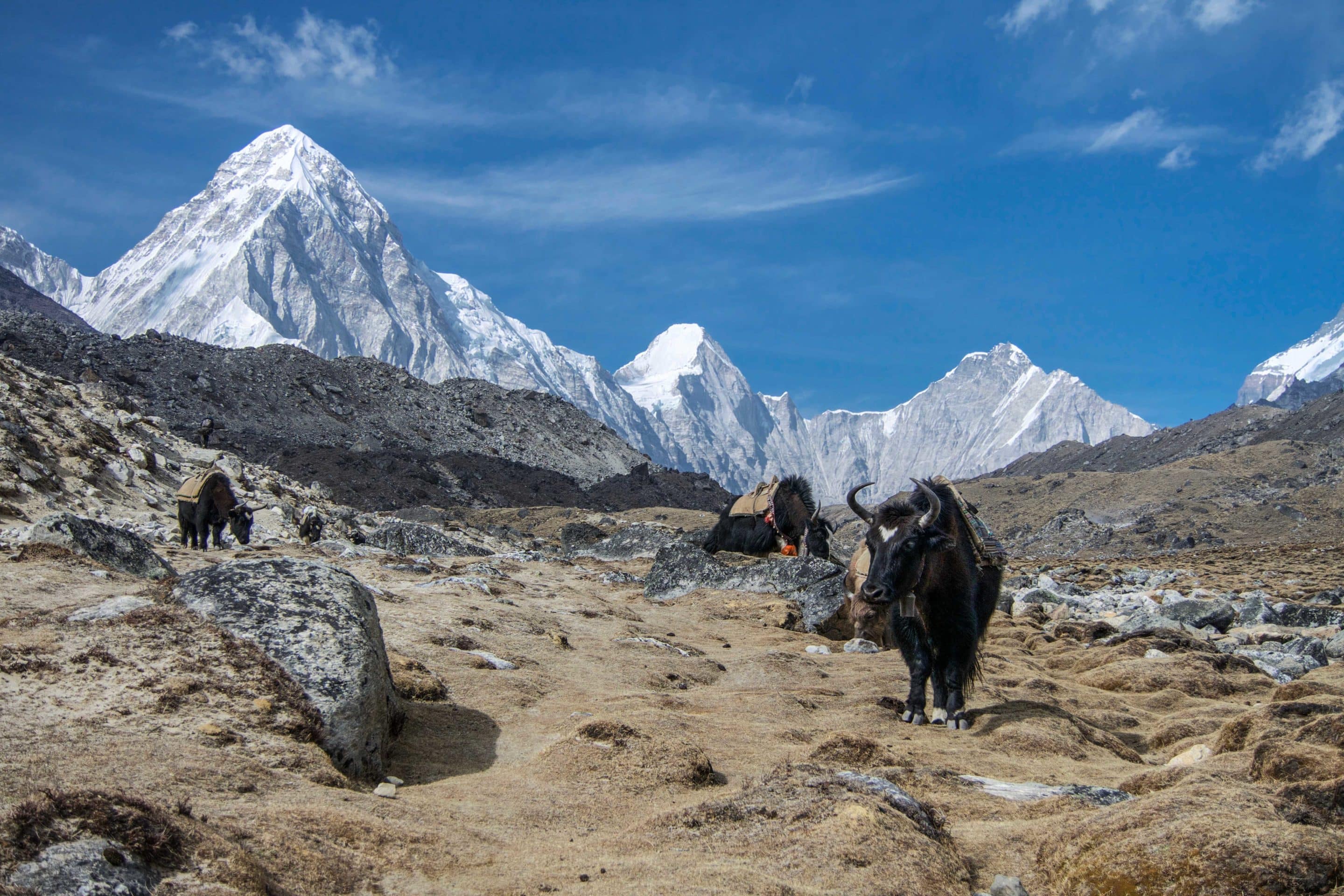

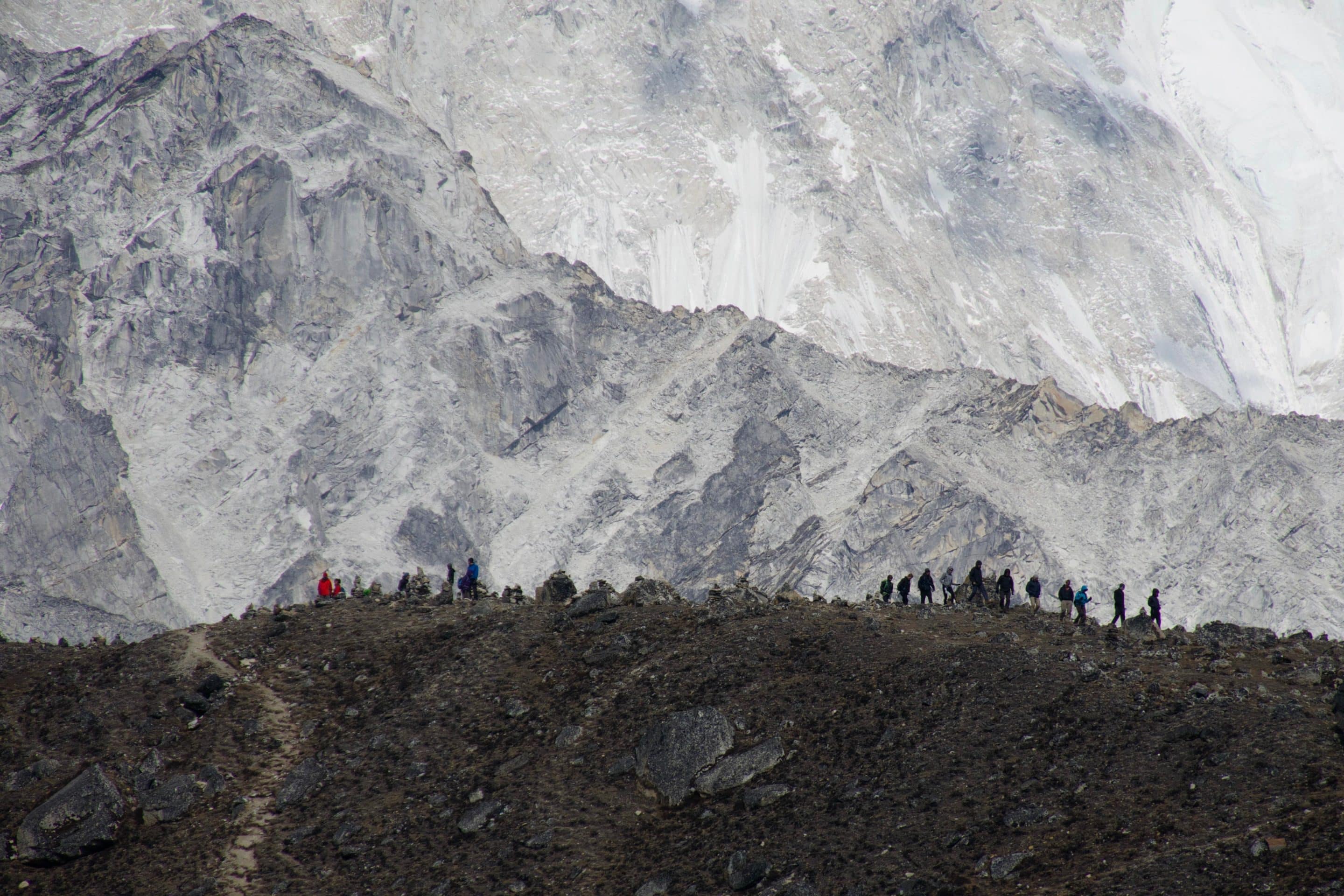


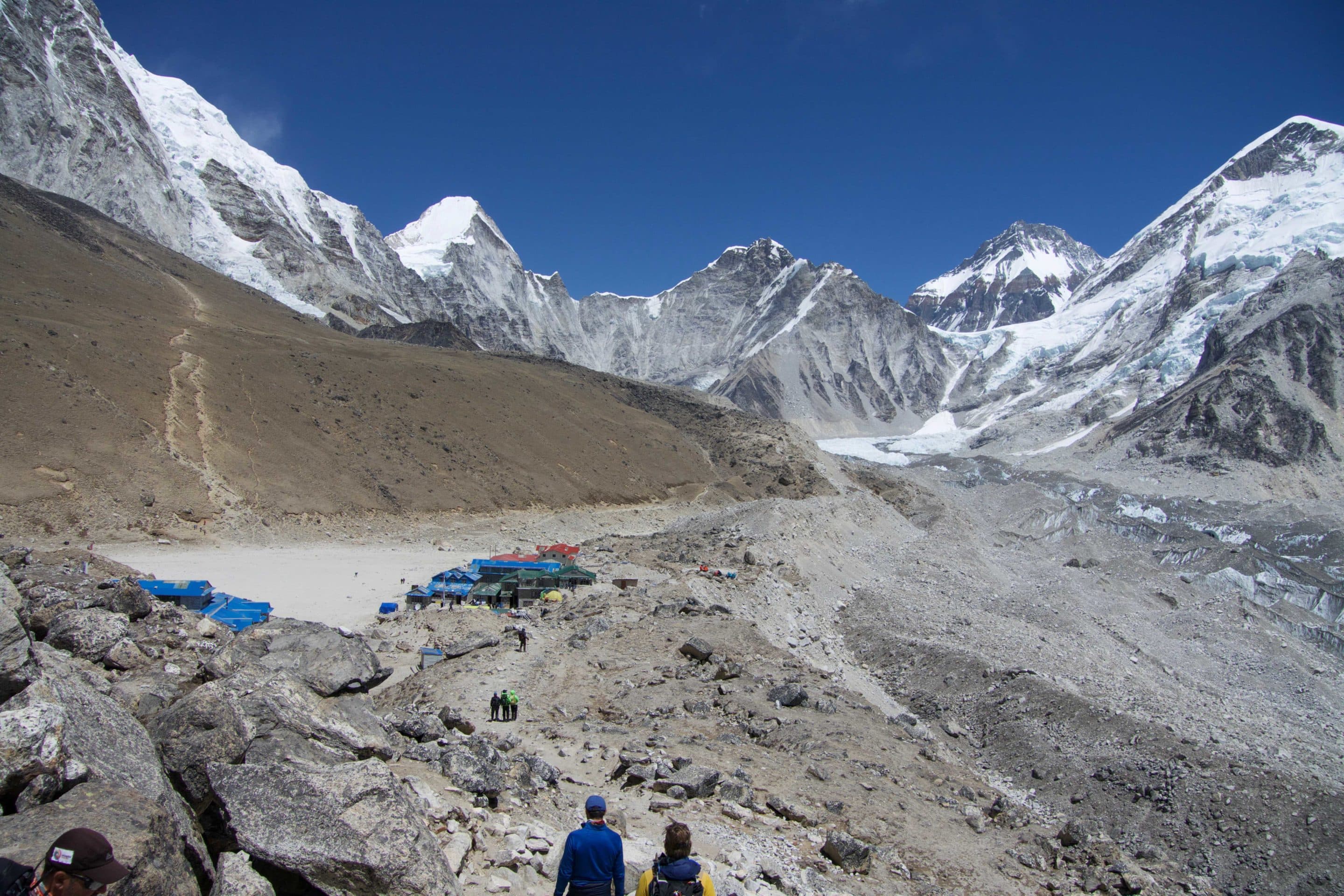
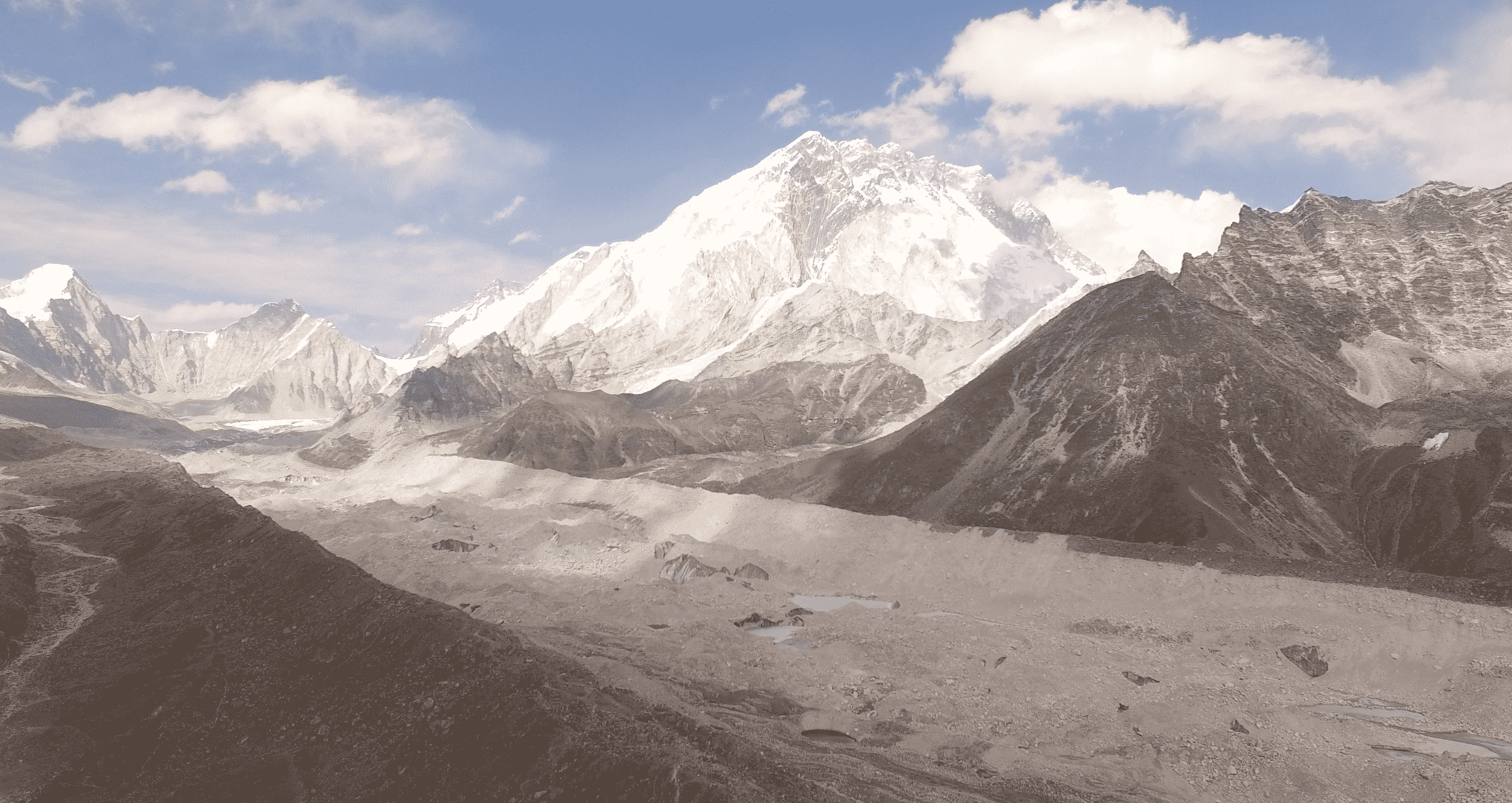


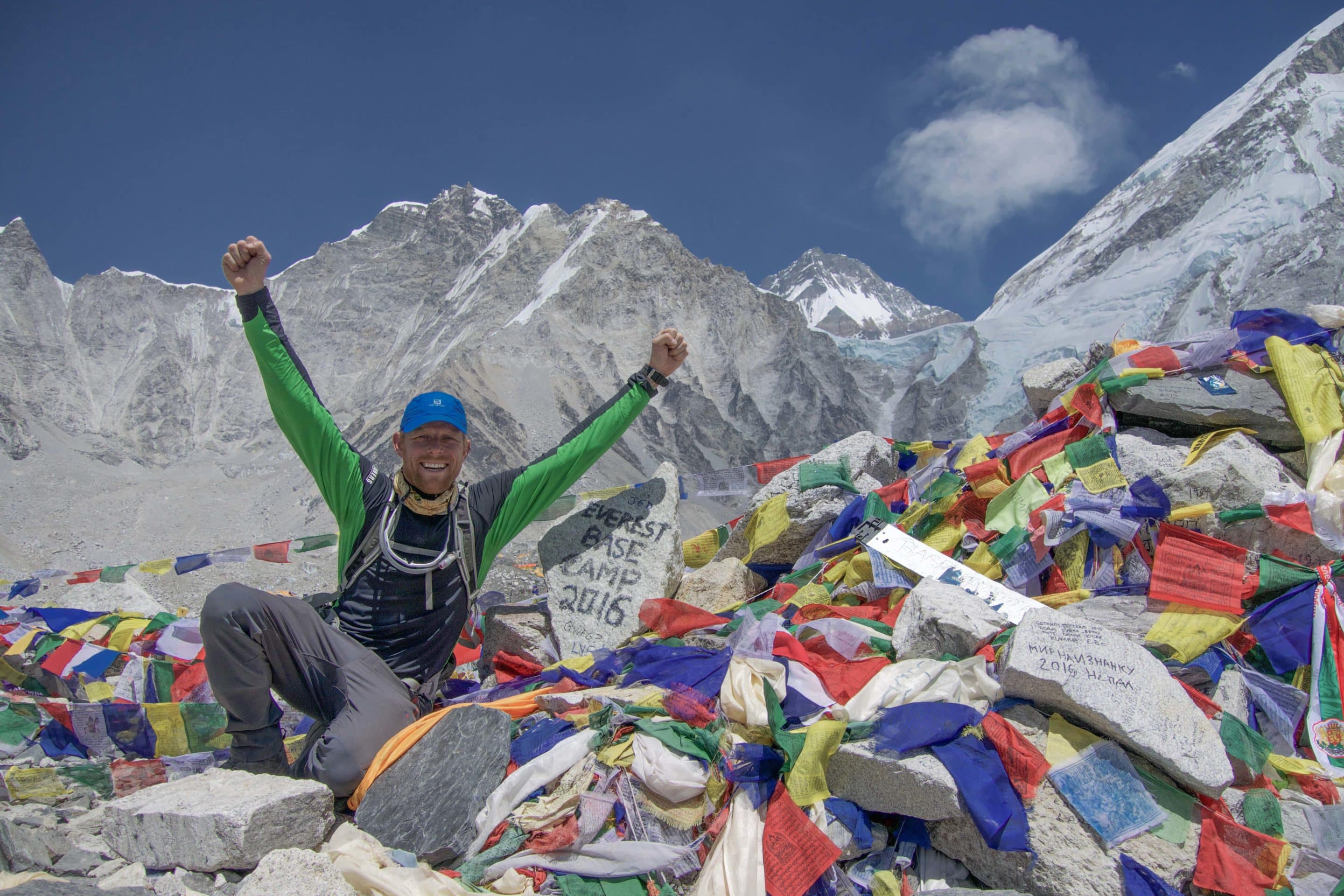
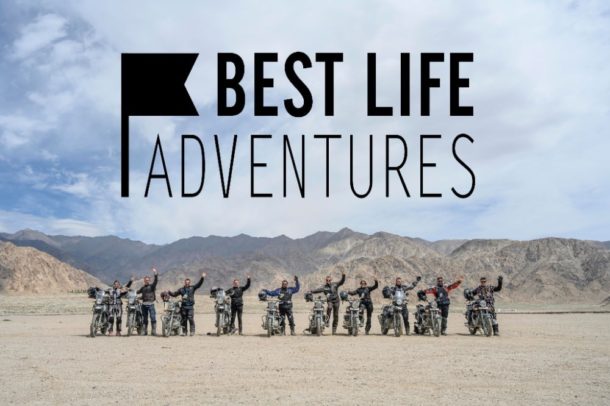
Great information about Mt. Everest Trip, This is great article with every day details information entire trip. Thank you very much for your contribution, this will helps to recognize Nepal among Mountain lovers.
Thanks for your lovely comment, it’s a wonderful country and I’ll do all I can to help bring its tourism industry back after the troubles of the last few years. Ben